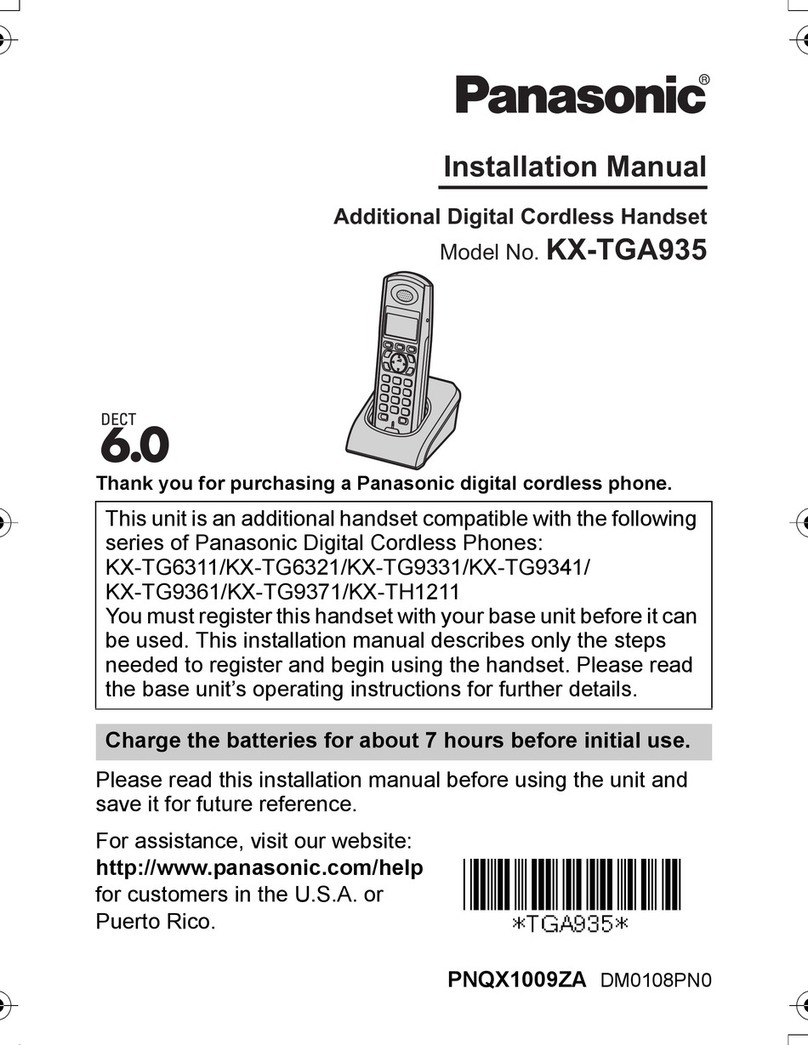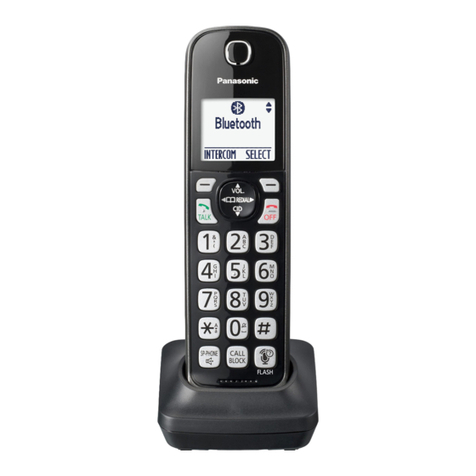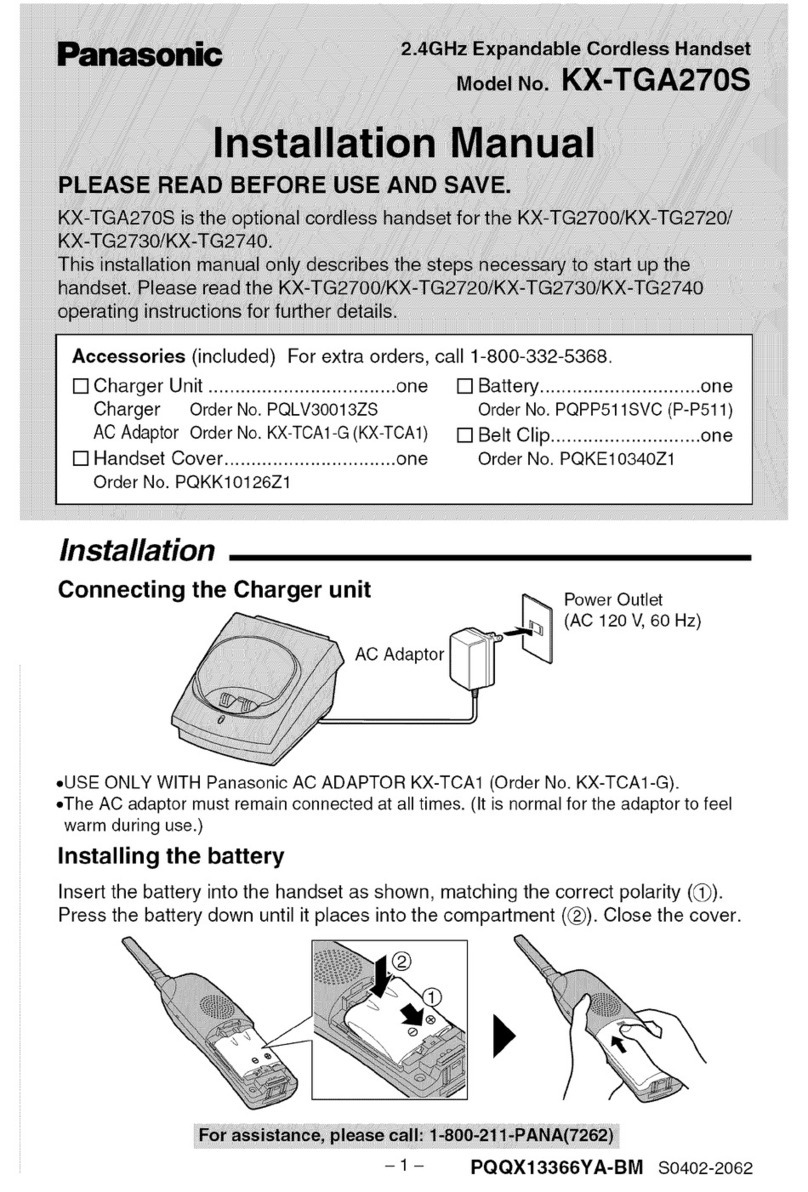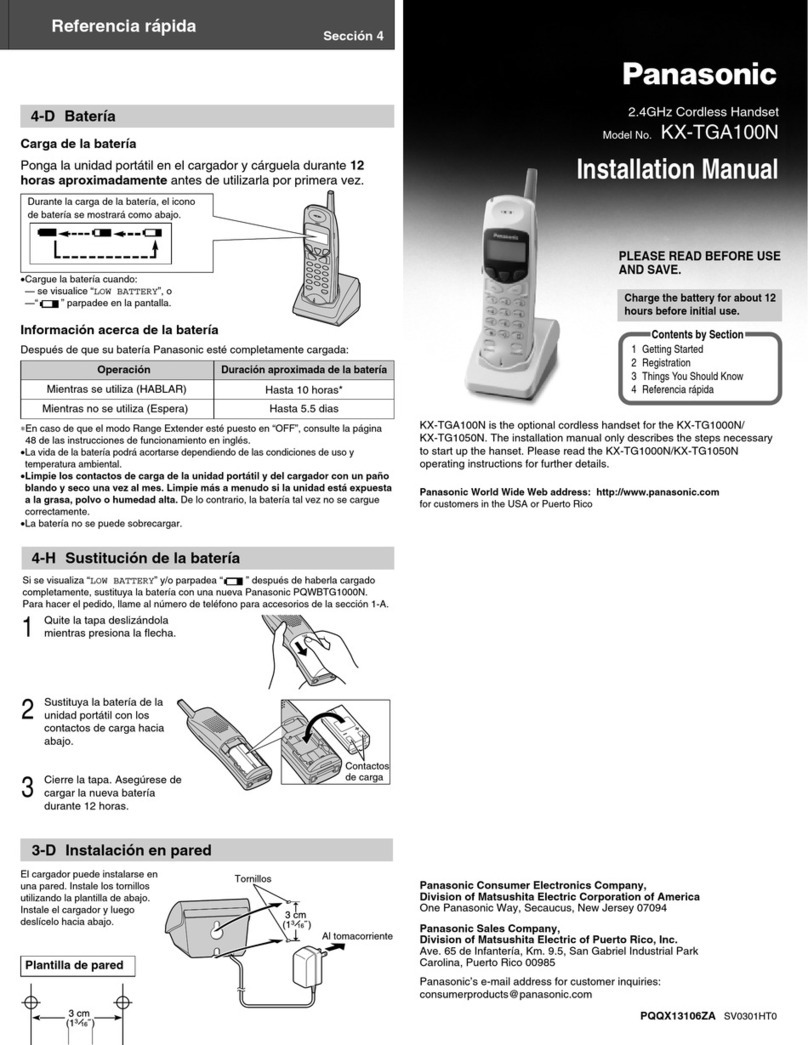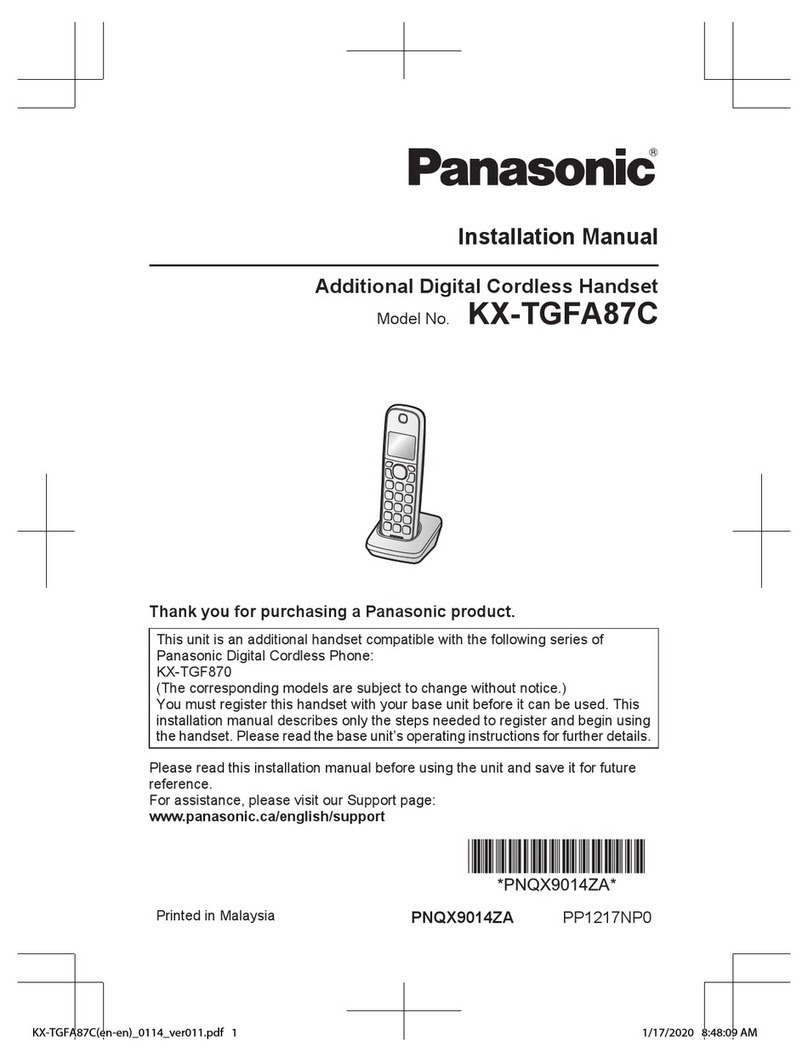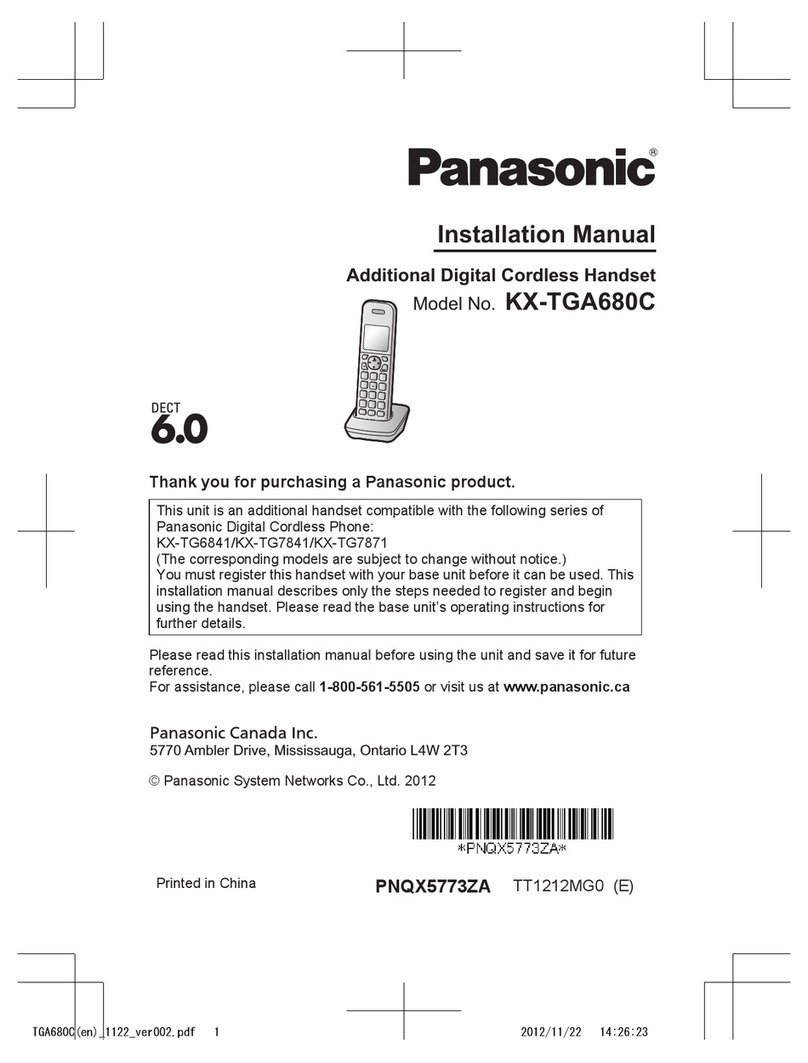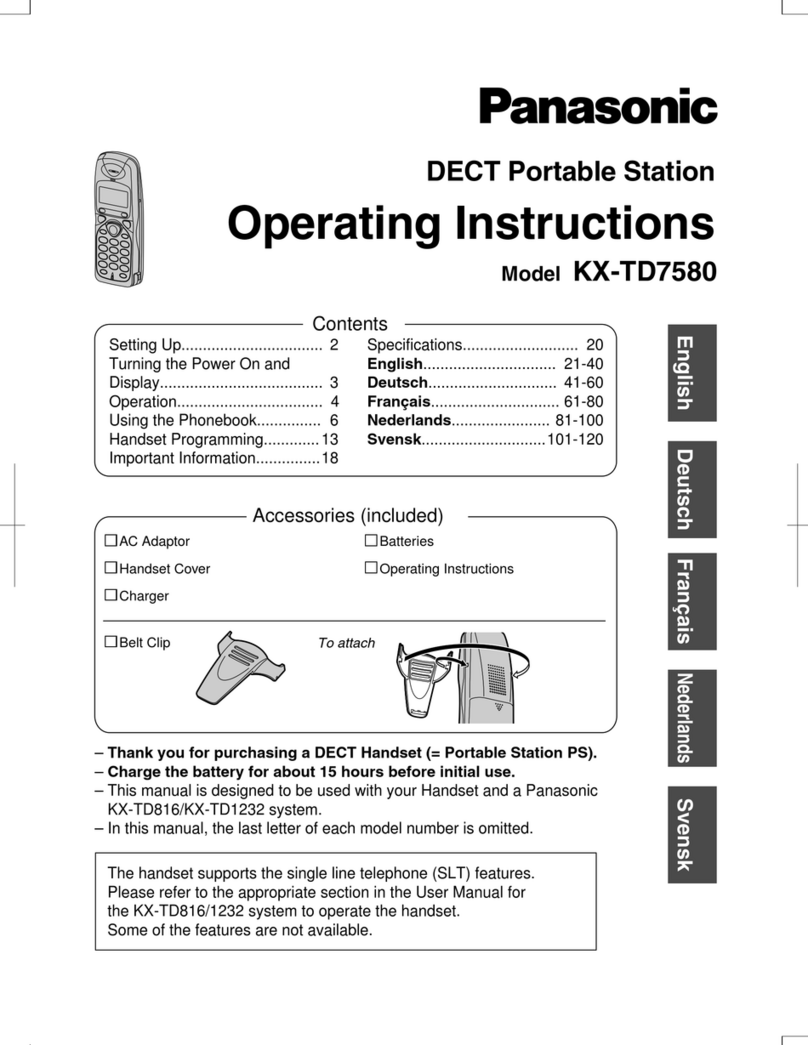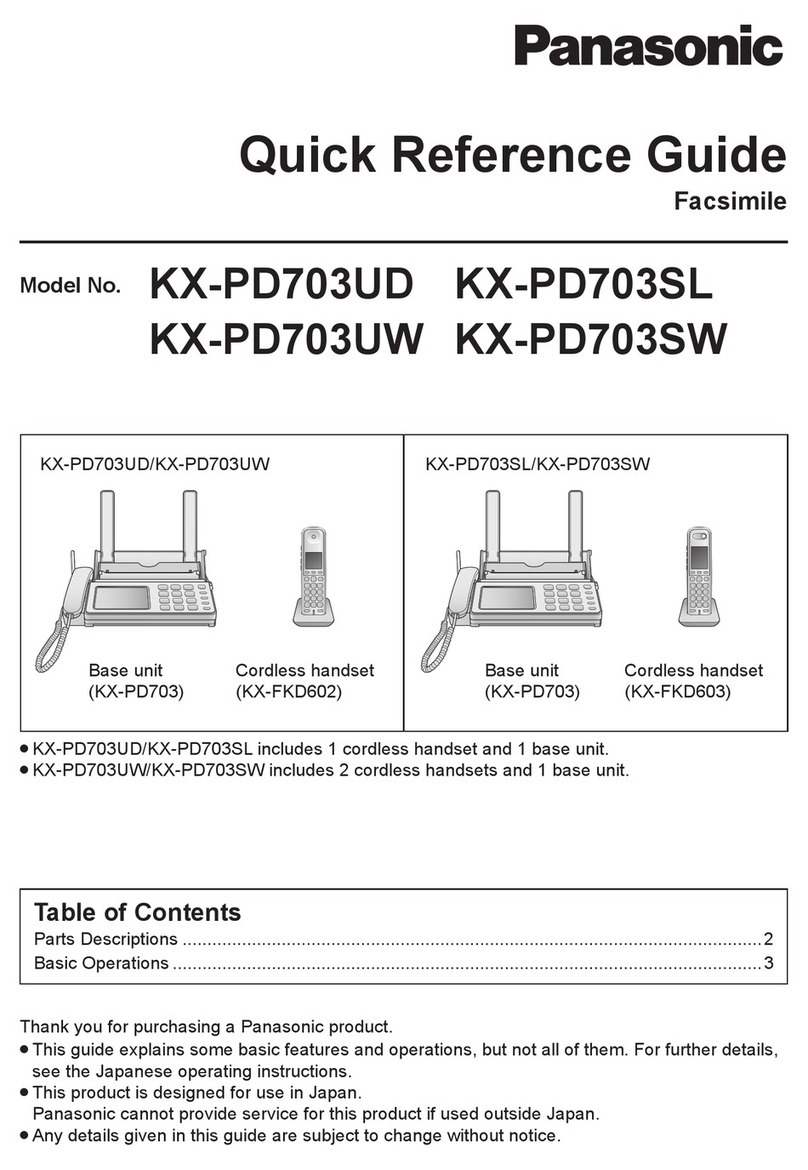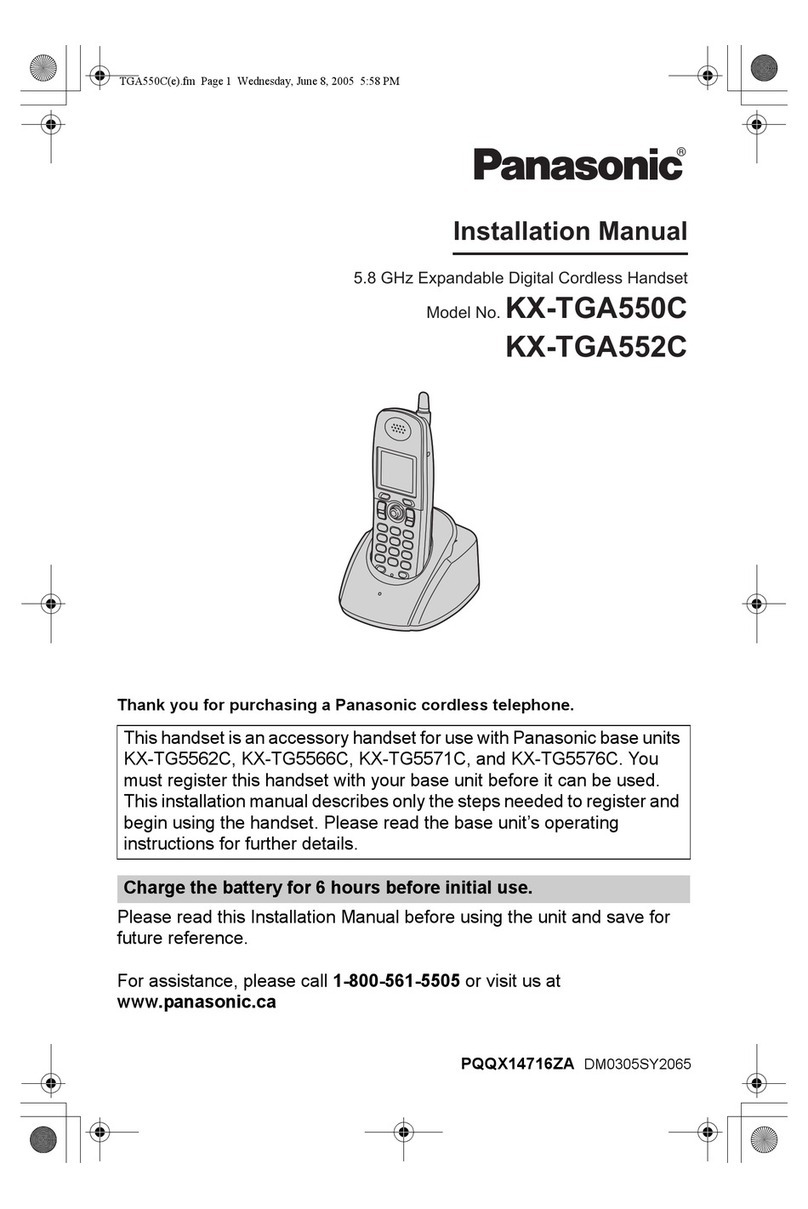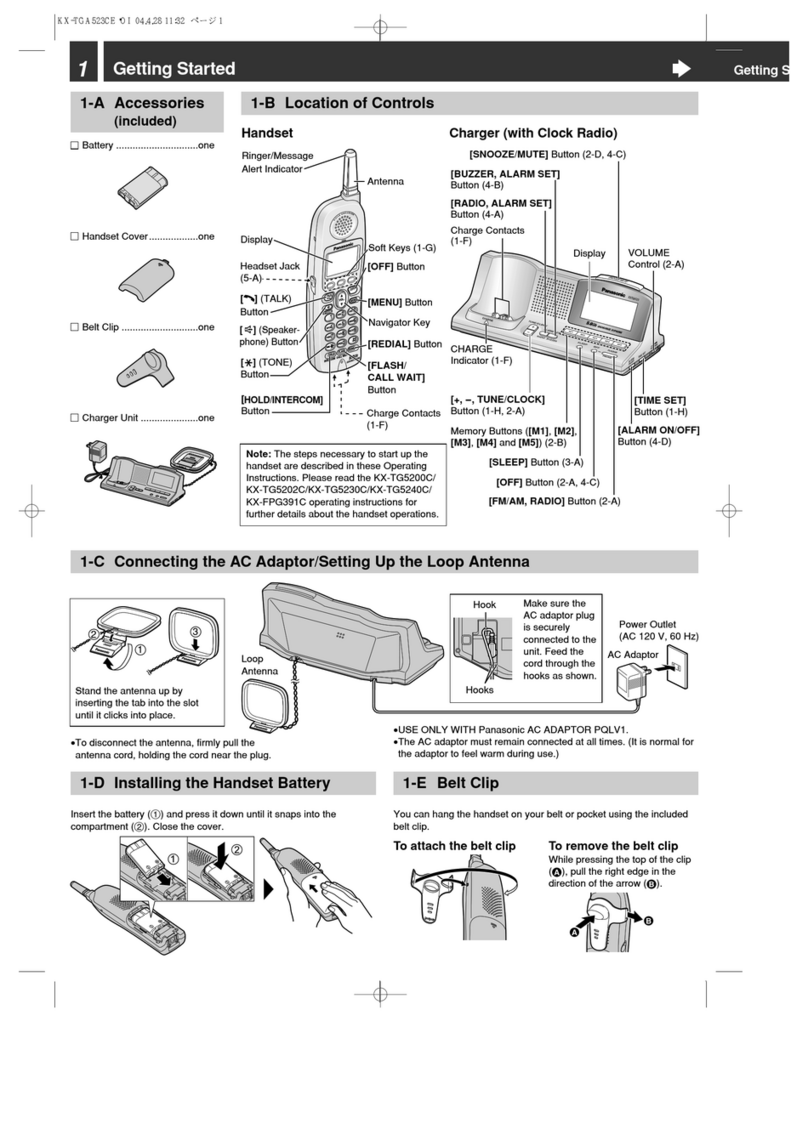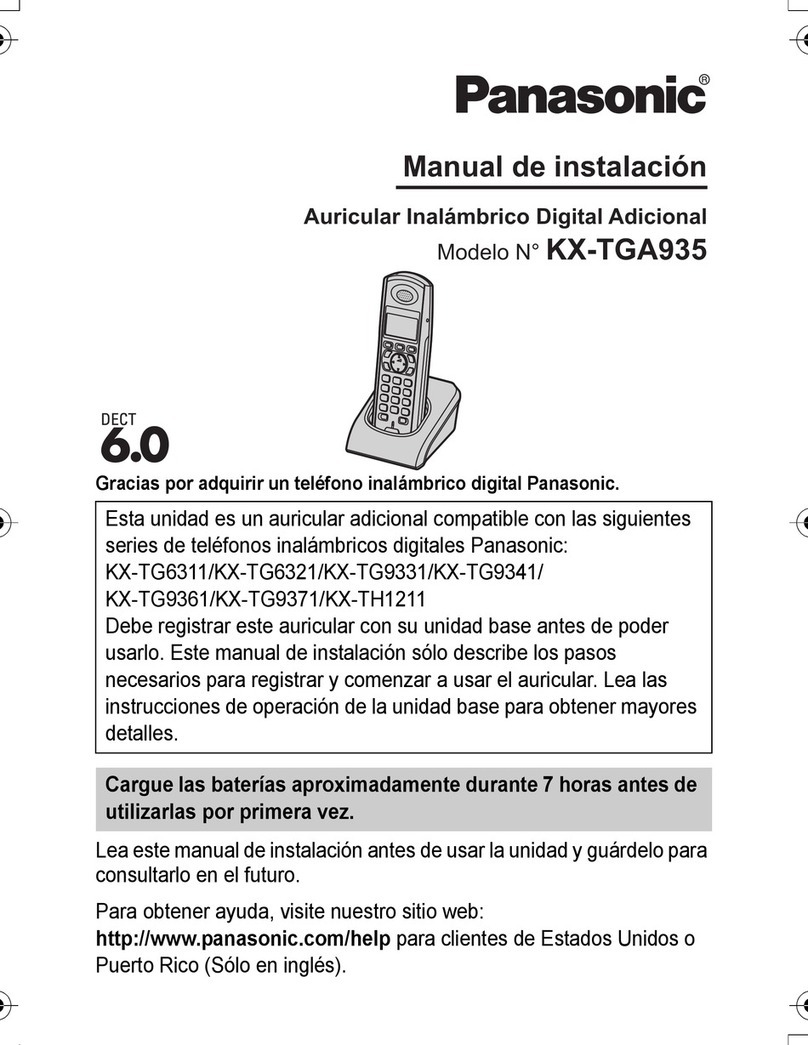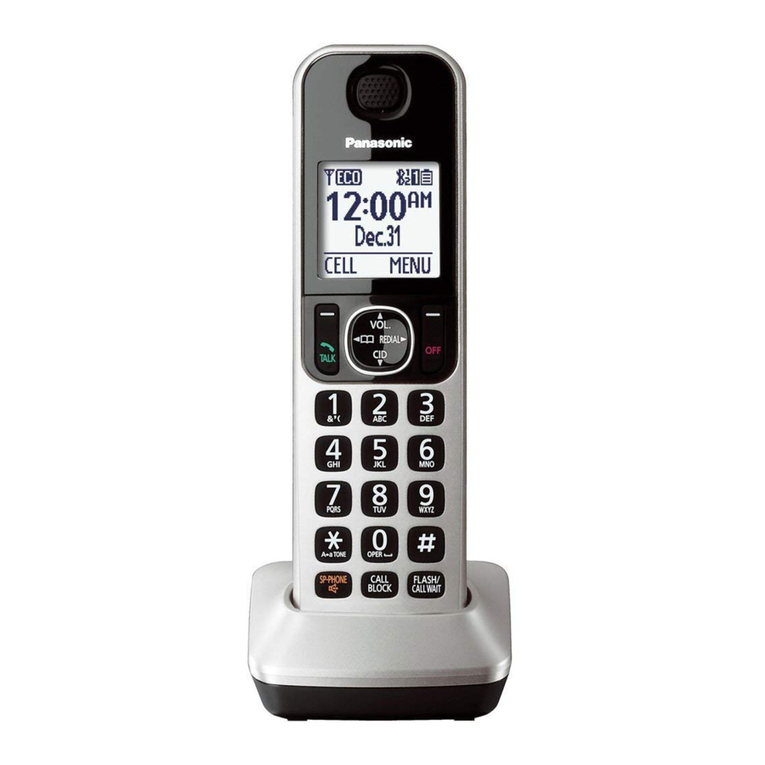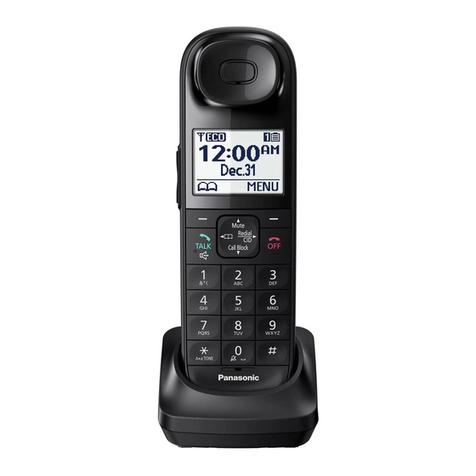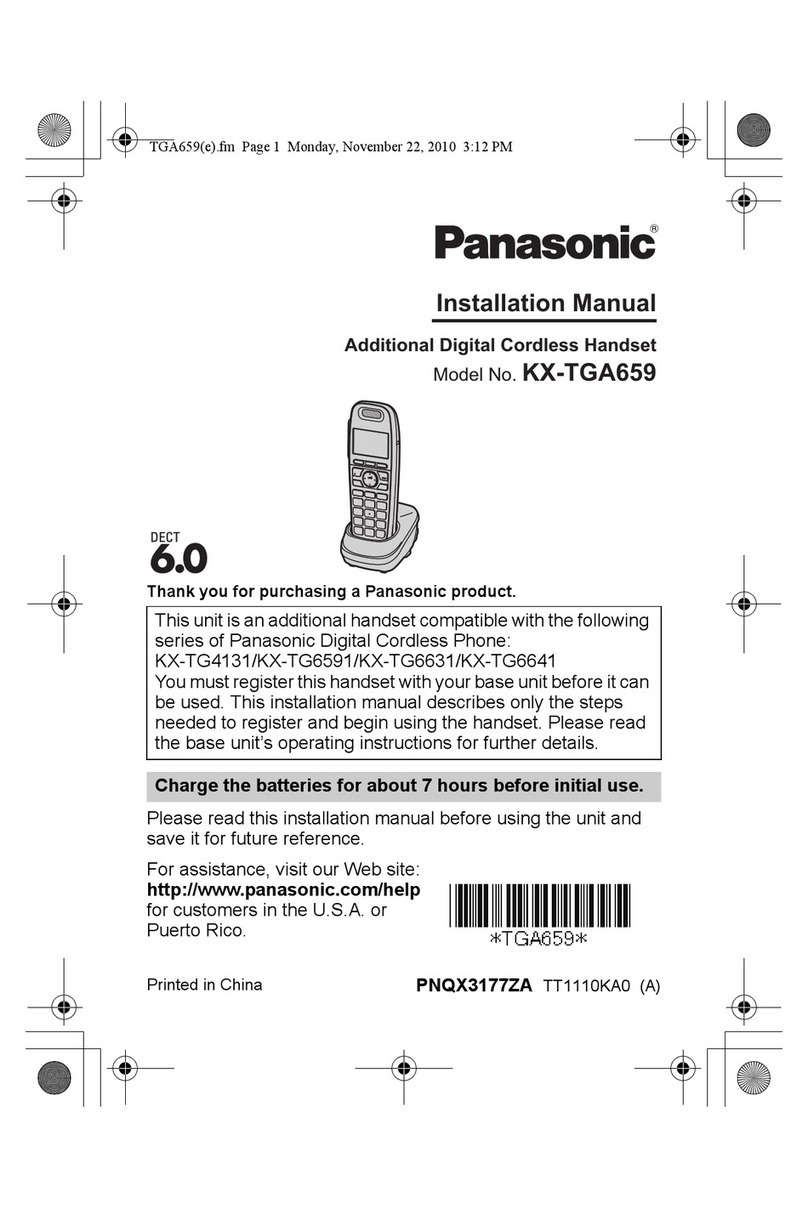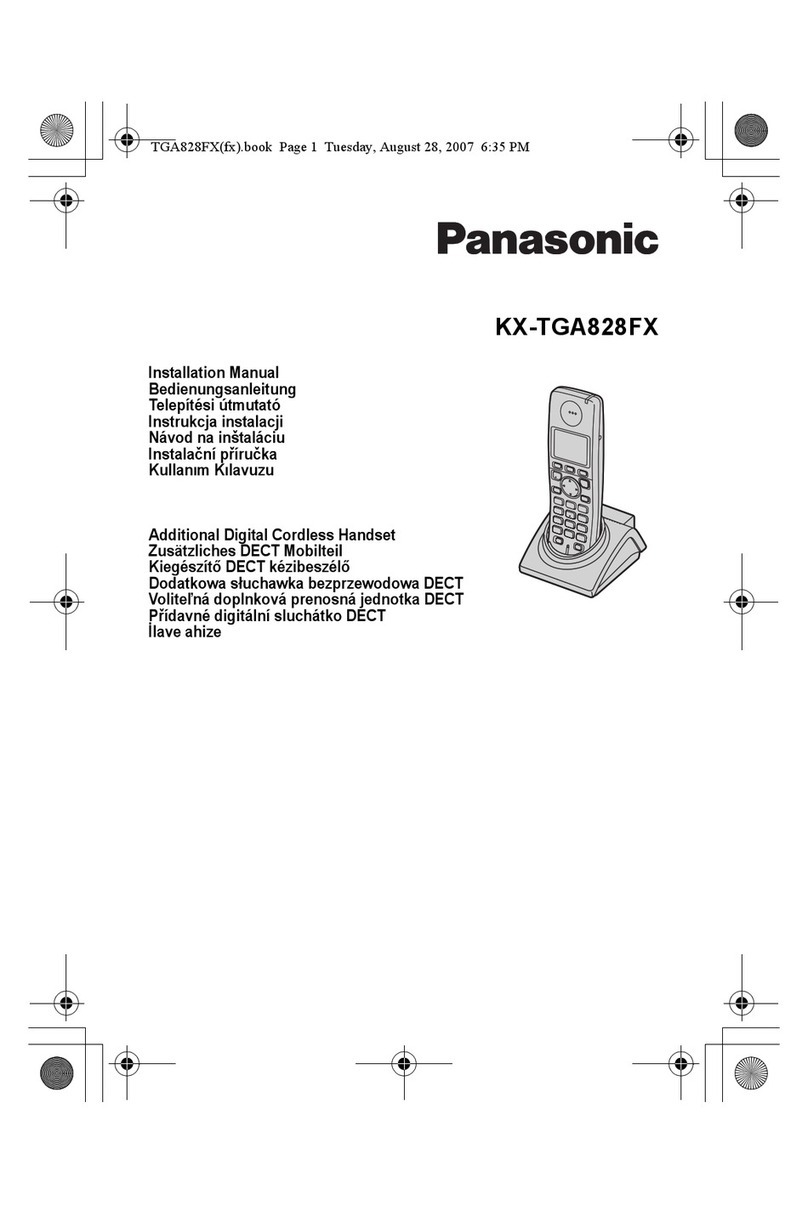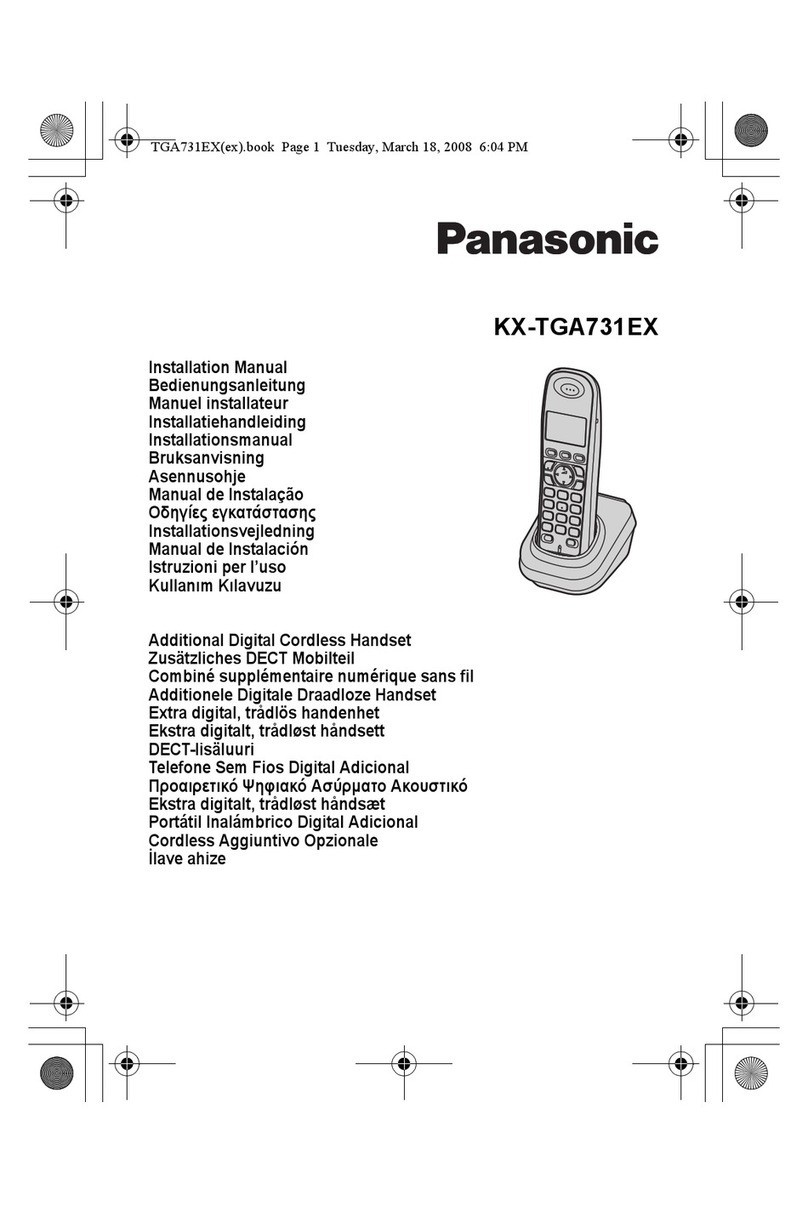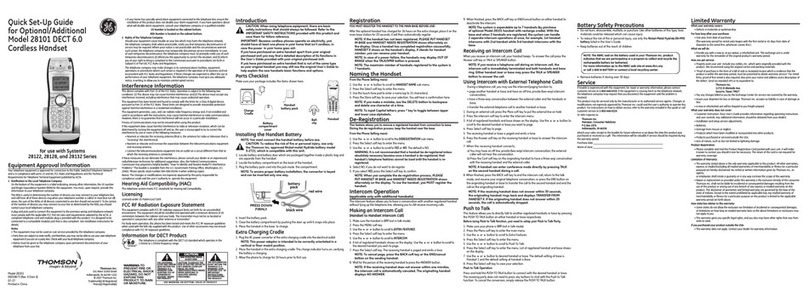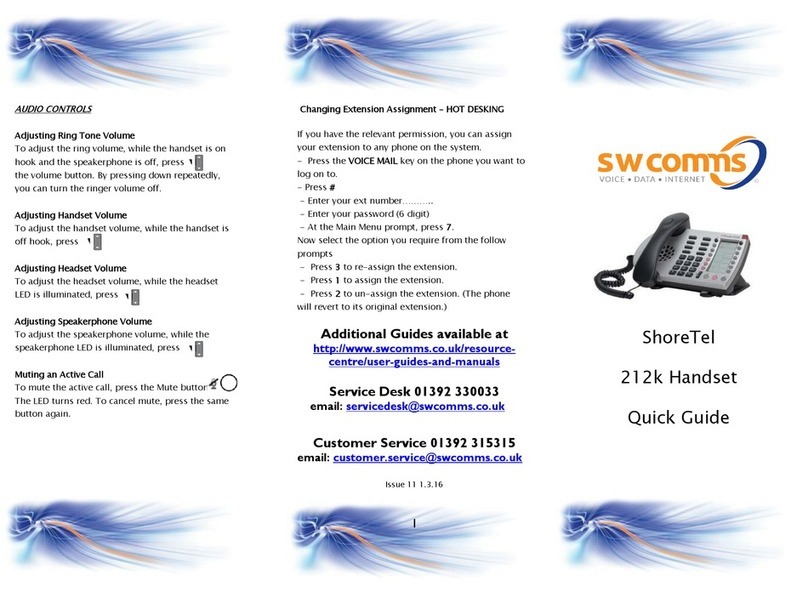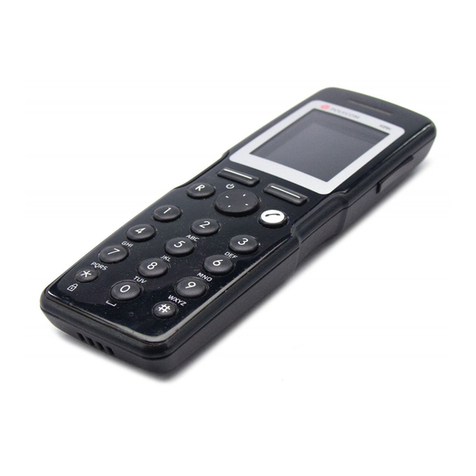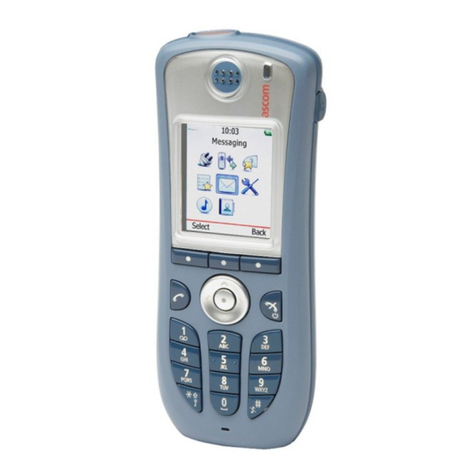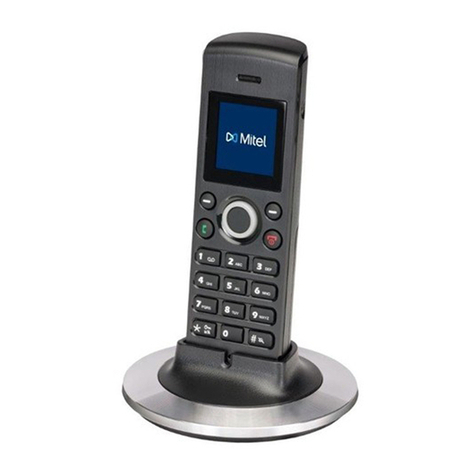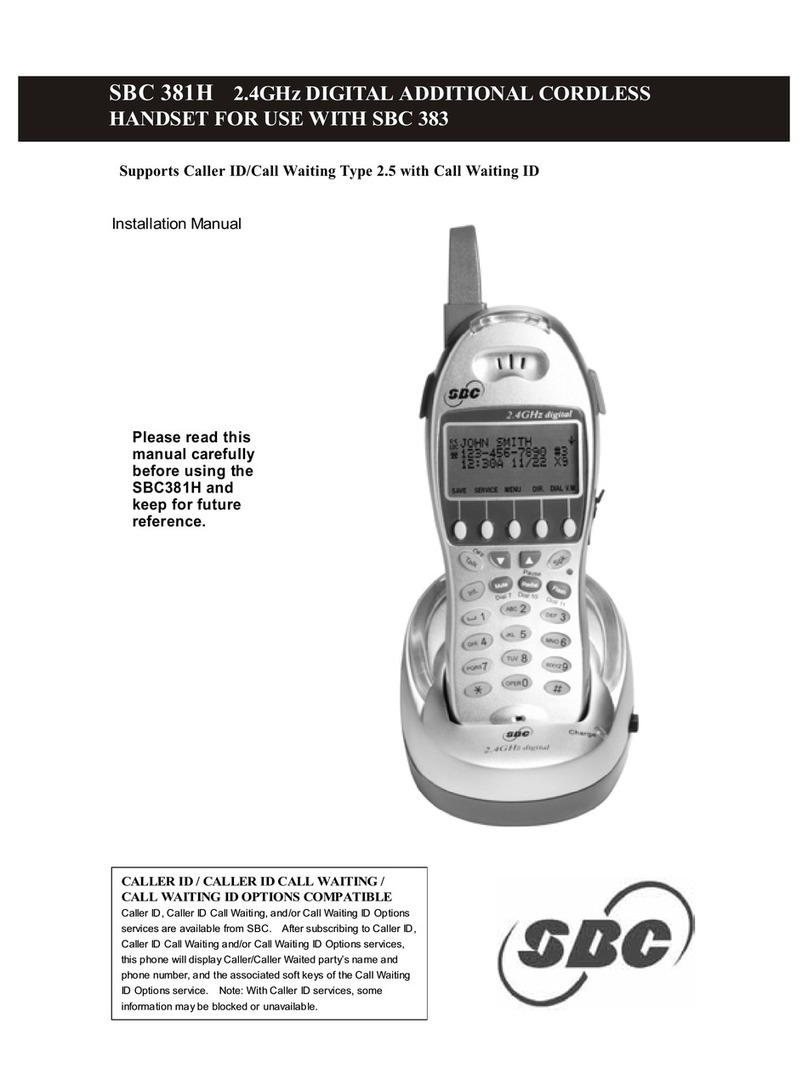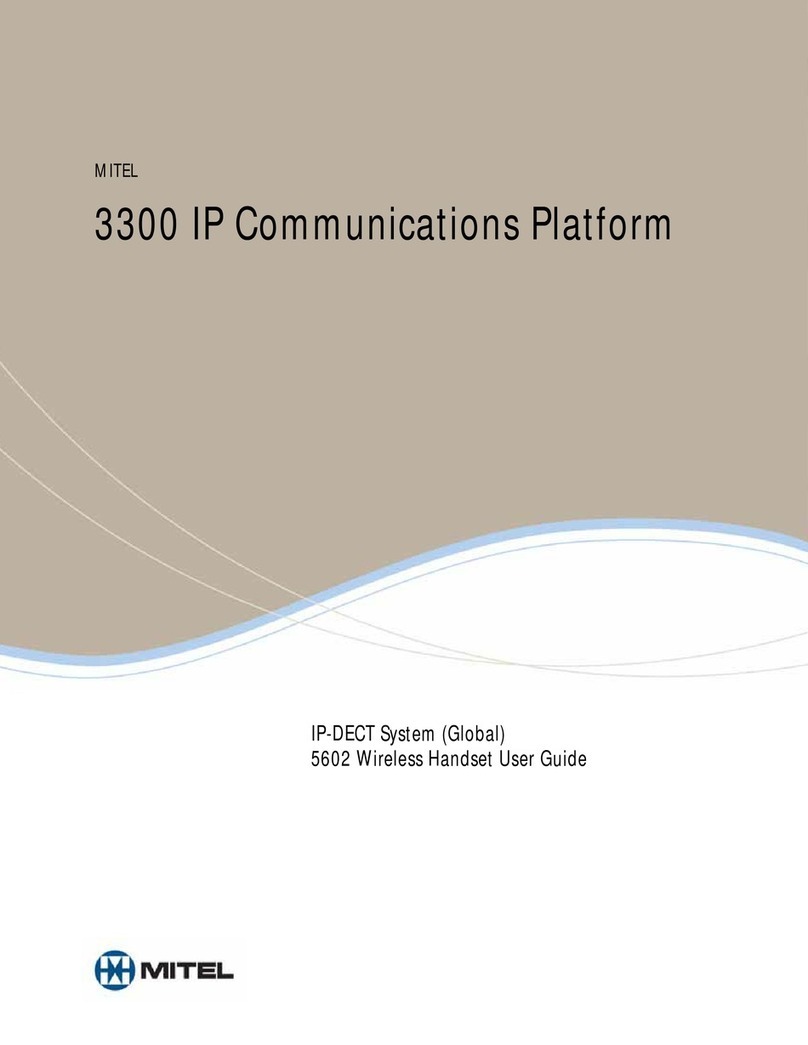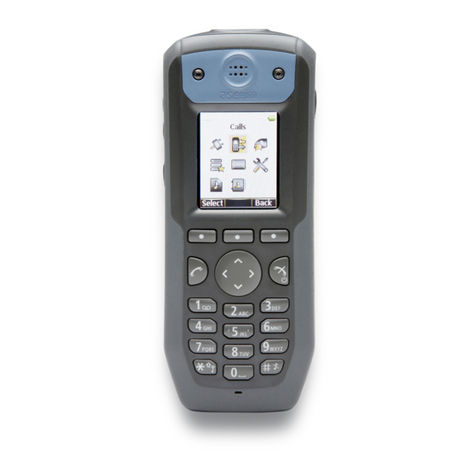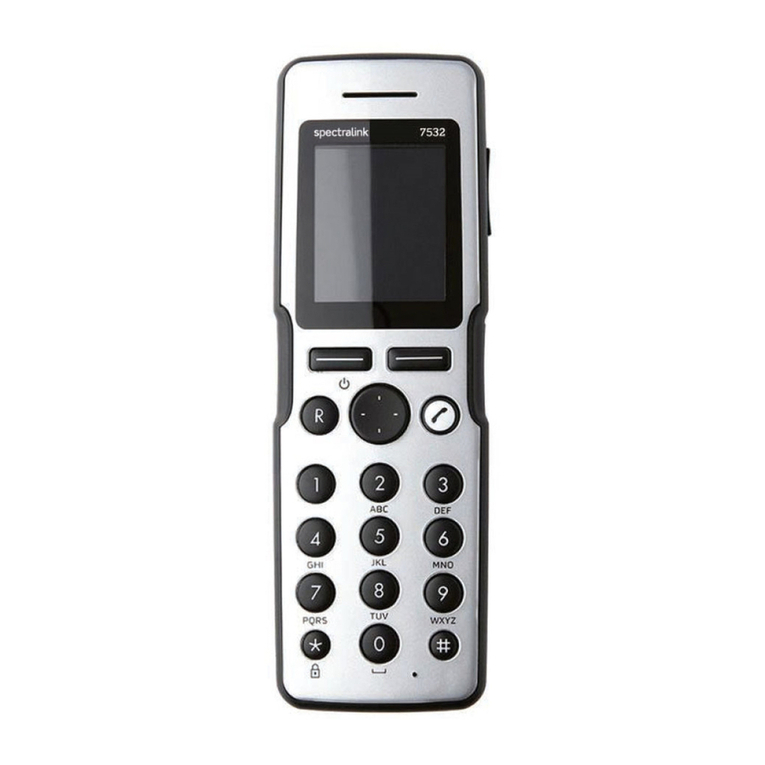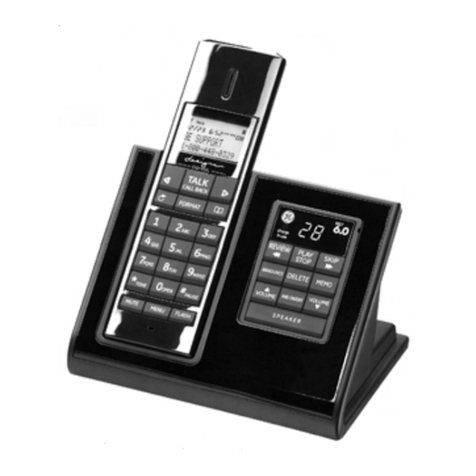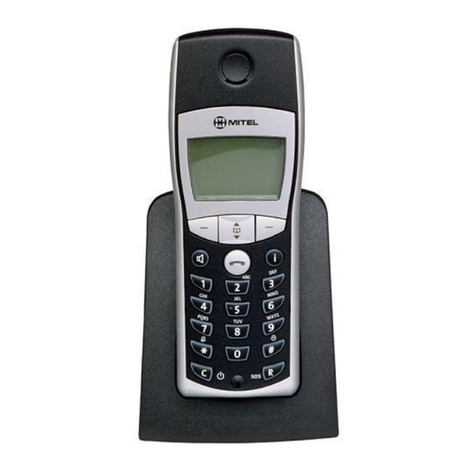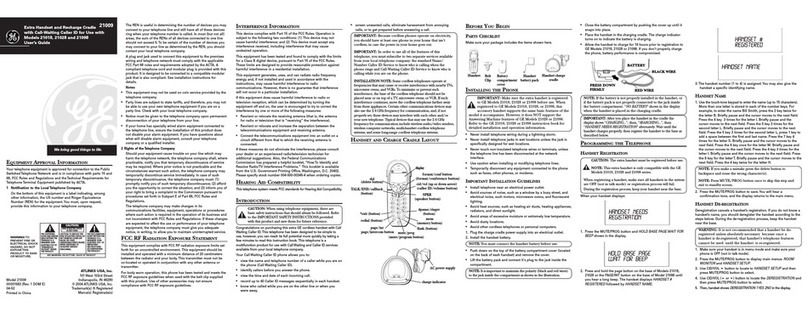
1 LOCATION OF CONTROLS 4
1.1. Base Unit 4
1.2. Handset 5
2 DISPLAY 6
3 SETTINGS 8
3.1. Connections 8
3.2. Adding Another Phone 9
3.3. STANDARD BATTERY LIFE 10
3.4. Selecting the Dialing Mode 12
3.5. Selecting the Line Mode 13
4 OPERATION 14
4.1. Making Calls 14
4.2. Answering Calls 16
4.3. Flash Button 17
4.4. Caller ID Service 18
5 DISASSEMBLY INSTRUCTIONS 26
6 ASSEMBLY INSTRUCTIONS 28
6.1. Assembly the LCD to P.C. Board (Handset) 28
6.2. How To Check Splash Resistance 29
6.3. Replace the RF unit 30
7 TROUBLESHOOTING GUIDE 31
7.1. Check Power 32
7.2. Check Battery Charge 33
7.3. Check Link 34
7.4. Check the RF Unit 35
7.5. Check Handset Voice Transmission 42
7.6. Check Handset Voice Reception 42
7.7. Check Call ID 43
8 TEST MODE AND ADJUSTMENT 44
8.1. Test Mode Flow Chart for Base Unit 44
8.2. Test Mode Flow Chart for Handset 45
8.3. Adjustment Battery Low Detector Voltage 46
8.4. Base Unit Reference Drawing 1 47
8.5. Base Unit Reference Drawing 2 48
8.6. Handset Reference Drawing 49
8.7. Frequency Table 50
9 DESCRIPTION 51
9.1. Frequency 51
9.2. Time Division Duplex (TDD) operation 51
9.3. Spread Spectrum 52
9.4. Signal Flowchart in the Whole System 53
9.5. EXPLANATION OF DSP DATA COMMUNICATION 54
10 TERMINAL GUIDE OF IC´S, TRANSISTORS AND DIODES 55
10.1. Base Unit 55
10.2. Handset 55
11 BLOCK DIAGRAM (Base Unit) 56
12 CIRCUIT OPERATION (Base Unit) 57
12.1. Power Supply Circuit 57
12.2. DTMF Signal 57
12.3. Line Sending Signal 58
12.4. Line Receiving Signal 58
12.5. Calling Line Identification Circuit (Caller ID) 59
12.6. Parallel Connection Detection Circuit 61
12.7. Telephone Line Interface 62
12.8. Initializing Circuit 63
12.9. Antenna Diversity 63
13 BLOCK DIAGRAM (Handset) 64
14 CIRCUIT OPERATION (Handset) 65
14.1. Power Supply Circuit 65
14.2. Charge Circuit 65
14.3. Ringer Circuit 66
14.4. Sending Signal 66
14.5. Reception Signal Circuit 67
15 CPU DATA (Base Unit) 68
15.1. IC501 68
16 CPU DATA (Handset) 69
CONTENTS
Page Page
2
KX-TG2559LBS

